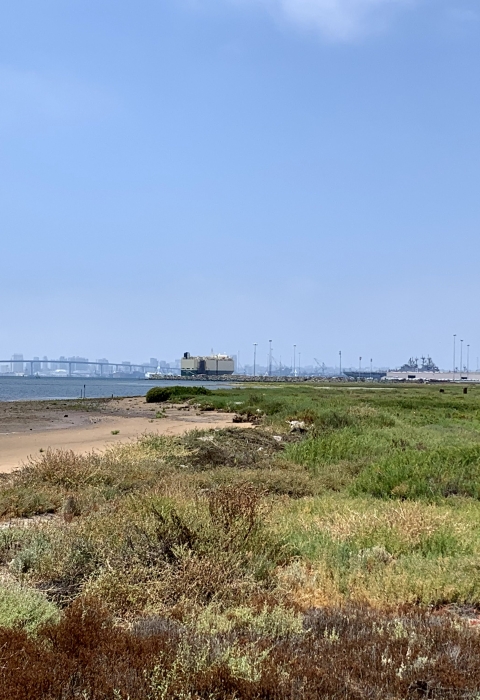The most significant habitat present on this refuge unit is coastal salt marsh salt marsh
Salt marshes are found in tidal areas near the coast, where freshwater mixes with saltwater.
Learn more about salt marsh . This habitat supports an array of invertebrates and juvenile fish, and provides nesting, foraging, and high water refuge for many species of birds. Some notable species include the federally listed endangered light-footed Ridgway's rail and the State endangered Belding’s savannah sparrow. The Ridgway's rail depends almost entirely on salt marsh habitat, and in particular dense patches of cordgrass, for feeding, resting, and nesting. Belding’s savannah sparrows are found throughout habitat. The federal endangered plant, salt marsh bird’s beak, also occurs within this habitat.
The intertidal mudflat and coastal salt marsh habitats of the Sweetwater Marsh Unit are also important wintering areas for many species of shorebirds, such as long-billed curlews, whimbrels, and red knots. Other significant habitats, which occupy a much smaller portion of the Refuge Unit, include wetland/upland transition areas and maritime succulent scrub habitat, both of which support several sensitive plant species. The D Street Fill, a tideland area that was filled with dredge spoils in the 1960s, today provides nesting habitat for several species of ground nesting birds including California least terns, horned larks, and killdeer. Western snowy plovers also nested here in the past, however, no snowy plover nests have been observed since 2000.



